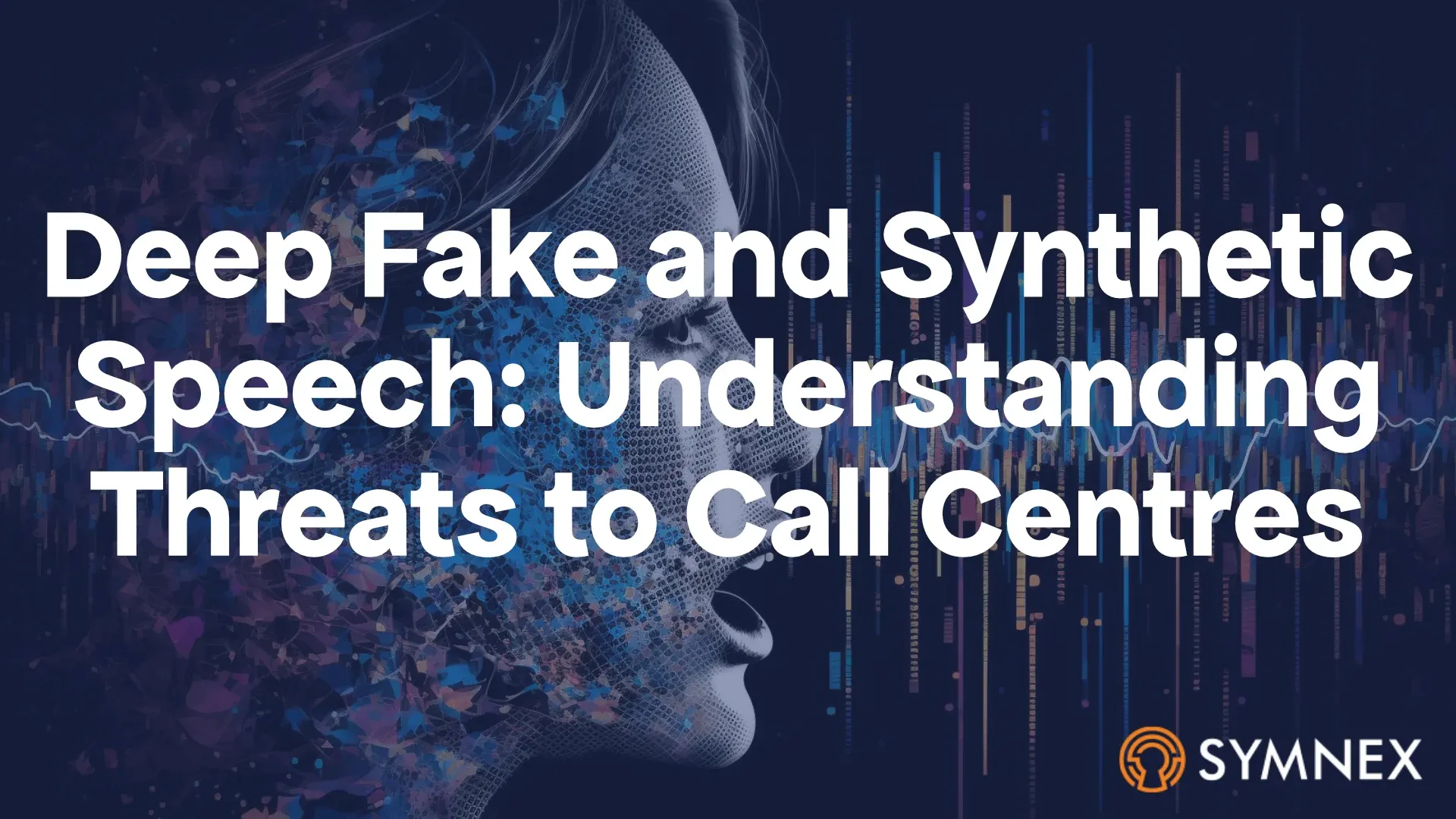This is Part 2 of my series on Microsoft's Voice Biometrics Exit:
- Part 1: What is Microsoft's Voice Biometric Endgame? - Why Microsoft will exit
- Part 2: Navigating Microsoft's Voice Biometrics Exit (this one) - Why act now
- Part 3: Voice Biometrics Partner Selection and Migration - How to transition strategically
In my last article I established Microsoft’s dwindling commitment to its Voice BiometricsVoice Biometrics uses the unique properties of a speakers voice to confirm their identity (authentication) or identify them from a group of known speakers (identification). solutions, Gatekeeper and SecuritySecurity is one of three key measures of Call Centre Security process performance. It is usually expressed as the likelihood that the process allows someone who isn't who they claim to be to access the service (False Accept). Suite, acquired when it bought Nuance. I drew this conclusion based on the minuscule current and potential revenue contribution, balanced against the reputational risk of sustaining a Voice Biometrics solution versus the customer relationship damage that would be caused by an abrupt exit. In this article we’ll examine the implications from your perspective and why organisations, like yours, should start their planning now.
I know that every organisation faces competing priorities for limited investment funds, and that spending to essentially maintain the status-quo is rarely popular and is likely to be deferred until mandatory. I do believe, however, that initiating your planning now delivers the best possible return, not just avoiding disruption later but revealing the strategic opportunities that might otherwise be missed.
The Critical Window for Planning
Let’s be honest: Microsoft is not going to upset some of its biggest customers with an abrupt exit. There will be plenty of notice and potential for extended support, but the direction is clear. Mid 2028 looks like the earliest, whilst it could well be later, it is inevitable that you will need to transition to an alternative at some point and perhaps with less than 12 months of formal notice when it comes.
This makes it imperative that you start planning now to minimise the disruption to front line users and customers. In my experience, 12 months just isn’t long enough to complete a full cycle of vendor evaluations, contact negotiations, design, implementation and migration work which will probably lead to compromises at every stage.
There are other compelling reasons for starting your planning now. Even if Microsoft’s formal support extends to mid 2028, that doesn’t mean your current solution will be as effective then as it is now. It’s inevitable that the product will stagnate as a result of reduced investment, knowledge and commitment. This could lead to a decay in effectiveness both in absolute and relative terms.
Without a well thought-through plan, you might also be forced into hasty decisions if for other reasons you are forced or choose to transition earlier. At the same time you may miss the opportunity to derive greater value from the technology during this period of uncertainty.
Risks from Stagnation and Decay
The world does not stand still and fraudsters particularly, will continue to push the boundaries of what is possible with synthetic speech and other nefarious ways to exploit organisations security vulnerabilities. Keeping ahead of these threats requires continuous research, development and implementation. The detect and respond cycle for these threats is only getting quicker and I’m not convinced that Microsoft will retain the expertise needed to keep up with the pace, even if they have the will.
In practice, whilst theoretically vulnerable, the deepfake threat to Voice Biometrics is currently overblown and primarily focused on consumers, internal business processes and those not protected by Voice Biometrics, but it will inevitably evolve, perhaps very quickly.
Related Articles
And we’ve been here before with Amazon Voice ID, the technology launched for their Connect platform in 2021 to much fanfare and to my mind was a “good enough” service for a lot of organisations. Fast-forward to just two days ago and the product was officially killed with a May 2026 end of life. But, the signs have been there for a while, product development had virtually halted, the last update was in April 2023, and their voice spoofing detection is nearly worthless against the latest off the shelf models.
As several organisations have discovered, even the best technology is not immune to the attention of determined investigative and citizen journalists looking for headlines. I’ve often said that no organisation is truly “live” with Voice BiometricsVoice Biometrics uses the unique properties of a speakers voice to confirm their identity (authentication) or identify them from a group of known speakers (identification). until it has weathered one of these media or customer incidents, which is why we plan for them rather than react. In these situations having a responsive and capable vendor to support with analysis and provide context to senior executives is essential and Microsoft has already lost some of the key resources that support these efforts.
Finally, your contact centre technology estate will not remain in stasis during this time and there will be changes that require expert advice and assessment, if not material changes. Changes to telephony platforms, call routing, interactive voice response (IVR) and CRMs all have the potential to impact the securitySecurity is one of three key measures of Call Centre Security process performance. It is usually expressed as the likelihood that the process allows someone who isn't who they claim to be to access the service (False Accept). and effectiveness of your Voice Biometrics solution and you do not want the evolution of your customer experience to be held back by the limitations of a single vendor.
Your Vendor-Agnostic Assets
In practice, a change of platform or vendor, doesn’t mean throwing everything away and starting again. You've created substantial assets beyond the technology that are vendor-agnostic:
- User Voiceprints with ConsentConsent is a step in the registration process where a user provides permission to process their biometric data before enrolment in a Voice Biometric system in a way which complies with applicable data protection and privacy legislation. - Undoubtedly your most valuable asset. Your existing customers have already provided their consent and enrolled their voice prints, all of which can be retained with a carefully designed migration.
- Customer Acceptance - Customers have become comfortable and familiar with biometric authenticationAuthentication is the call centre security process step in which a user's identity is confirmed. We check they are who they claim to be. It requires the use of one or more authentication factors., you’ve educated them and overcome initial resistance. Your previous efforts have not been wasted.
- Business Processes - Your organisation has developed workflows and procedures for enrolments verification and exception handling that are embedded in your front line workforce and systems that are largely agnostic of the specific vendor’s technology.
- Operational Expertise - Your technology and back-office teams have a good understanding of the key concepts and their application. This will allow you to make better and quicker decisions about your new vendor and the implementation of their technology.
The technology landscape has probably evolved dramatically since your initial implementation. Modern audio acquisition approaches are far more standardised and understood. APIs for CTI and Agent Desktop integration are also now far better defined which means that complexity and costs may be significantly lower than your original deployment.
Subscribe for New Content
Perhaps most importantly, algorithm performance has improved substantially, opening use cases, particularly with short utterances typical in Voice Automation scenarios that weren't feasible with earlier generations. This transition represents an opportunity to unlock greater business value from your existing voice biometricsVoice Biometrics uses the unique properties of a speakers voice to confirm their identity (authentication) or identify them from a group of known speakers (identification). investment.
Finally, Microsoft (and Nuance before them), have always been priced at a premium to their competitors. This wasn’t always clear in the sticker price but with professional services requirements and minimum commitment levels the total cost of ownership was nearly always higher than their competitors. There is therefore an opportunity to negotiate a better deal, which when combined with the above factors could actually reduce your ongoing operational expenses.
Strategic Opportunity Beyond Simple Migration
Many organisations will approach this as a like-for-like replacement exercise, seeking to minimise both cost and effort but this misses the strategic opportunity to press reset on your call centre securitySecurity is one of three key measures of Call Centre Security process performance. It is usually expressed as the likelihood that the process allows someone who isn't who they claim to be to access the service (False Accept). model. Through my work with dozens of organisations I know that most are not realising the full potential of their existing investment. Even those that that have met their original investment cases have opportunities to realise more value. This forced migration provides a window of opportunity and stimulus that might not otherwise have existed but only by starting to plan now will it be possible to realise its true value.
Specifically you should consider extending the use of voice biometrics to other uses cases.
- If only deployed in the IVR, then extend to agents interactions - Many of your customers will currently bypass the security and customer experience value of this technology and be stuck with traditional, time-consuming authenticationAuthentication is the call centre security process step in which a user's identity is confirmed. We check they are who they claim to be. It requires the use of one or more authentication factors. methods when they get to an agent.
- If text-dependent with fixed passphrase like “My Voice is My Password”, then transition to text independent voice biometrics - This is now a realistic option and can dramatically increase the effectiveness of voice automation solutions. It also doesn’t mean that your existing voice prints are thrown away.
- If only deployed with agents, then extend to IVR - This will unlock significant voice automation and self-service opportunities.
- If only used for authentication, extend to fraudster and anomaly detection
- If only used for fraudster detection, extend to authentication
- Consider expanding to digital channels for high value and risk transactions
Your existing registrationRegistration is the business process where a user is offered, consents to, and completes a Voice Biometric service enrolment. process, particularly the eligibility and consentConsent is a step in the registration process where a user provides permission to process their biometric data before enrolment in a Voice Biometric system in a way which complies with applicable data protection and privacy legislation. steps, were probably defined before you had much understanding of how your customers and front line users would really use them. They were likely appropriately conservative for that time but are now probably holding you back far more than your technology choices. You, and the industry as a whole, now have significantly more experience and best practice to refresh these processes and unlock the full potential of the technology.
Related Services
This is also now the right time to consider complementary securitySecurity is one of three key measures of Call Centre Security process performance. It is usually expressed as the likelihood that the process allows someone who isn't who they claim to be to access the service (False Accept). technologies such as Network AuthenticationAuthentication is the call centre security process step in which a user's identity is confirmed. We check they are who they claim to be. It requires the use of one or more authentication factors. and Fraud Detection, that add additional layers of security to those customers not registered for Voice BiometricsVoice Biometrics uses the unique properties of a speakers voice to confirm their identity (authentication) or identify them from a group of known speakers (identification). and support more secure registrationRegistration is the business process where a user is offered, consents to, and completes a Voice Biometric service enrolment. processes.
Turning Challenges into Advantage
Transitioning from Microsoft’s Voice Biometrics solutions does not mean throwing away your investment and starting again. It has the potential to not only reduce your total cost of ownership but increase the financial and non-financial benefits you derive from the technology.
It would be a mistake to consider this a like for like replacement and wait for Microsoft’s “end-of-life” notice. The imperative now is to evaluate your existing processes, identify potential partners and plan for transition that enhances, rather than merely maintains your capabilities.
Microsoft has unwittingly provided the stimulus and window of opportunity to do this. Those organisations that begin planning now will find themselves at a significant advantage, both in negotiating power with vendors and in maintaining customer protection and experience.
In my next article I'll look at the specific steps you should take, including the current state of the market and how to approach it. If you'd like to discuss how these considerations apply to your specific situation before then, contact me directly.


